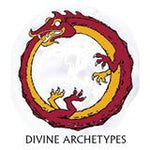How It Works

Essential oils and vibrational essences are catalysts for profound change. Through their innate energetic properties, they play a significant role in addressing what Jung terms psychic inertia, where a conscious mental shift alone is not enough to rid us of deeper, unwanted psychological influences. These tools help us to achieve the shift in energetic body required for bringing about a deeper, lasting change.
This, of course, assumes that we have already identified the desired change. However, it is often the case that although we wish to make a change, we do not necessarily know what that change must be or how to go about making it. In such cases, it is helpful to choose an archetype that resonates with our desire. (See our product pages for descriptions)
A divine archetype is a model that embodies an aspect of the collective unconscious. By its very definition, we are all part of the collective unconscious; we may use a divine archetype to help us become conscious of an aspect of it that we are currently unaware of. In other words, we are not attempting to awaken to an aspect outside of ourselves, but rather to an existing aspect that lies dormant within ourselves.
Therefore, we can use a divine archetype as a model for change. When we identify items or ideas that energetically embody a desired archetype, we may use the corresponding essential oils and essences to re-pattern our own energies to bring us into alignment with the archetype, thus awakening the dormant aspect (or aspects) of self that we wish to develop.
This helps us not only to escape our psychic inertia, but also to align with the energetic blueprint, held within the archetype, that can propel us forward through our desired transformation.
This concept is taught and used in Tibetan schools of Buddhism, where advanced students will engage in visualizations of a particular deity that they wish not simply to emulate, but to actually become, melting into their personal energetic field, merging with them, before melting into emptiness. This offers the possibility of rapid growth as you are reformatted by the perfected patterns of the various Buddha’s archetypes. This exercise marries the concepts of method, wisdom, and emptiness:
"The buddha’s wisdom consciousness, motivated by compassion, is a projection of one’s own mind and serves as a template for one’s development[1]. The appearance of the deity develops into a buddha’s form body, while one’s mind develops into a truth body, and thus both bodies are complete in one consciousness." (Powers 2008, p. 77)
The italicized portion of the preceding quote is important to understand. You are not learning a principle outside of self, but rather awaking to an aspect within self. The deity one invokes is a perfected or divine archetype for one to use as a template to shape one’s energetic body and stimulate a positive shift.
It is possible to engage in the energetic blueprint of whatever archetype is being invoked and achieve a spontaneous understanding and embodiment. The more refined and clear your own energetic body is, the more sensitively it can respond. That is why most traditional practices include intensive preliminary steps to purify and cleanse one of negative/obscuring energetic patterns in the beginning of the process of growth. (Our Pure Line is beneficial in this process)
Rituals turn one inward so that archetypes can be activated; rituals also express unconscious forces and help one through difficult transitional stages. Our tendency towards participation mystique (an unconscious identification with an object/idea) allows a safe, dynamic way to explore one’s full potential.
This timeless act of invoking an energy (archetypal form) much greater than what our small conscious self is capable of is usually employed when the 'mind’ is blocked and cannot figure out next steps. Or when we know the direction we want to go but need the infrastructure to get one there.
At Divine Archetypes we provide the tools you need to take these steps.
See our Dilution & Application page for an example of ritual use.
.........
[1] Italics not in orginal text.
Powers, J. (2008). A Concise Introduction to Tibetan Buddhism. Ithaca, NY: Snow Lion Publications.
